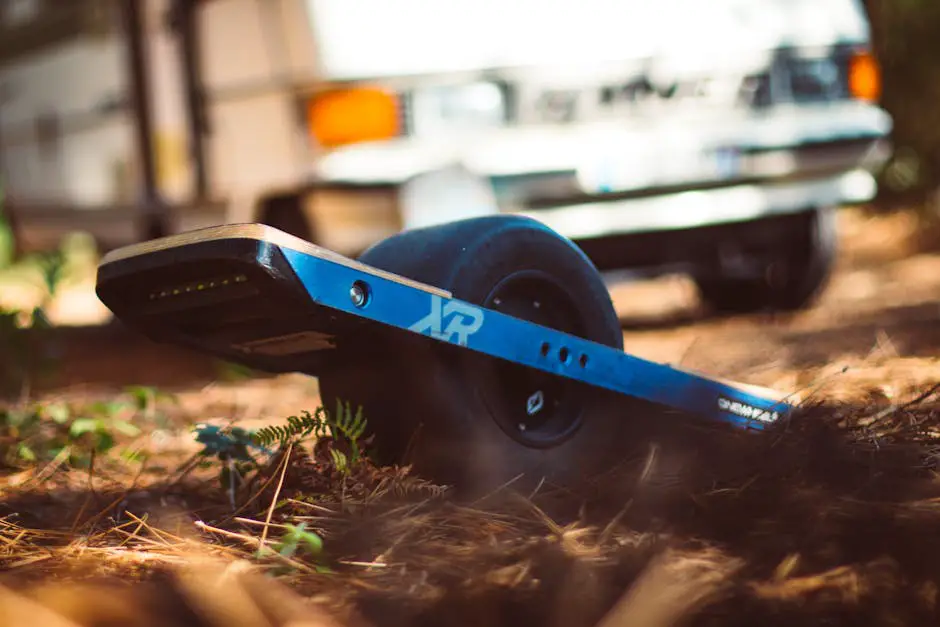Choosing the right electric skateboard for your child involves more than just picking out a cool design. It’s about finding a balance between fun and safety, ensuring that your child enjoys their skateboarding experience while staying protected. This guide aims to provide you with the necessary steps to select an electric skateboard that not only matches your child’s needs but also supports their growth as a rider in a safe and comfortable manner.
Selecting the Right Electric Skateboard
Choosing the Best Electric Skateboard for Your Child
When selecting an electric skateboard for your child, safety and suitability should be at the forefront of your considerations. Follow this step-by-step guide to make an informed choice.
1. Assess Age and Skill Level:
Electric skateboards vary in power and speed, making some models better suited for younger or less experienced riders. Start with a board that matches your child’s current skateboarding skills and age. Manufacturers often specify the appropriate age range and skill level for their products.
2. Consider the Size and Weight of the Board:
The size and weight of the electric skateboard impact its manageability. A lighter and shorter board may be easier for a child to control and carry. Review the product specifications to ensure the skateboard is a good fit for your child’s size and strength.
3. Look for Safety Features:
Safety is paramount. Choose a board with a durable build and reliable safety features such as a low-speed setting for beginners, easy-to-use brakes, and a stable deck that supports balance and control. Some electric skateboards are also equipped with LED lights for better visibility.
4. Examine Battery Life and Charge Time:
The fun can quickly end if the skateboard’s battery runs out too fast or takes too long to charge. Look for a model that offers a balance between battery life and charge time to suit your child’s usage pattern. Typically, a board that provides a decent range on a single charge while not requiring overnight charging is ideal.
5. Prioritize Easy-of-Use:
An electric skateboard that is straightforward to operate encourages more frequent use and can enhance the learning experience. Key aspects include an intuitive remote control, clear indicators for battery life, and a hassle-free method to switch between different speed modes.
6. Check Durability:
Kids can be tough on their gear. Choose an electric skateboard made from high-quality materials that can withstand the inevitable bumps and scrapes associated with regular use. Reading product reviews can give you insight into how a skateboard holds up over time.
7. Research the Brand and Warranty:
Go for reputable brands recognized for their quality and customer service. A good warranty and accessible customer support can save you headaches and expenses if issues arise with the skateboard.
8. Set a Budget:
Prices for electric skateboards vary widely, with higher-end models offering more features and better performance. Determine how much you’re willing to spend in advance, but remember that investing in safety and quality could mean paying a bit more.
By considering these factors, you’ll ensure the electric skateboard you choose for your child will not only bring them joy but also support their growth as a rider safely and comfortably. This step-by-step guide aims to simplify the selection process, helping you make a choice that aligns with your child’s needs and your expectations.

Understanding Safety Gear
Ensuring the safety of children on electric skateboards transcends choosing the right board. Equipping them with essential safety gear is a critical step in safeguarding their wellbeing. Here is a succinct guide to the indispensable safety gear for young electric skateboard enthusiasts.
Helmet: The cornerstone of skateboarding safety, helmets protect against head injuries, the most serious risk associated with any skating activity. Opt for a helmet specifically designed for skateboarding or bicycling, ensuring it fits snugly and covers the forehead. Look for helmets that meet safety standards set by organizations like ASTM or CPSC.
Wrist Guards: Children are likely to break their fall with their hands, increasing the risk of wrist injuries. Wrist guards provide support and can absorb the impact, protecting against fractures and sprains. Ensure a comfortable, secure fit to maintain agility while skateboarding.
Knee and Elbow Pads: Knee and elbow injuries are common but avoidable with the right protective gear. These pads should have a snug fit without restricting movement, featuring durable padding to cushion falls effectively. Select pads rated for skateboarding or inline skating for optimal protection.
Closed Shoes: A pair of closed, slip-resistant shoes is essential. They should have flat soles to provide firm grip and control on the skateboard. Shoes designed for skateboarding offer additional protection and durability in critical areas subjected to wear and tear.
Reflective Gear or Lights: For visibility during dusk or early evening rides, reflective gear or attaching lights to the skateboard can be life-saving. High-visibility vests or wristbands ensure drivers and pedestrians can see the skateboarder, reducing the risk of accidents.
Gloves: Though not always classified as essential, gloves can protect hands from abrasions during falls and enhance grip on the skateboard’s remote control, if applicable. Choose gloves that offer a balance between protection and dexterity.
Acknowledging the thrill that comes with electric skateboarding, instilling a culture of safety from the onset is imperative. Armed with the necessary gear, children can experience the joy of skateboarding while minimizing the risk of injury. The emphasis should always be on creating a safe environment that encourages responsible skating practices among youthful riders.

Basic Riding and Safety Techniques
Moving forward, once the foundational elements and safety gear have been established, learning basic riding techniques becomes pivotal for young riders. Here is an exploration of those techniques alongside key safety practices that deserve attention.
Essential Riding Techniques for Kids
- Balancing on the Board: Before venturing forward, kids must learn how to mount the board, stand steadily, and find their balance. This step is crucial and typically requires practice on a stationary board before progressing to movement.
- Starting and Stopping: Understanding how to gently start forward motion and come to a smooth stop is essential to avoid sudden jolts or falls. Teach children to gradually lean into starts and shifts their weight back to stop.
- Turning and Steering: Steering involves shifting weight from one foot to the other. Practice in an open, safe area, encouraging kids to gently lean in the direction they wish to turn while maintaining their balance.
- Speed Control: It’s important for kids to know their comfort speed limit and how to maintain a steady pace. Emphasize the importance of starting slow and only gradually increasing speed as they become more comfortable.
Key Safety Practices
- Continuous Supervision: Adult supervision is necessary, especially for beginners or when riding in new areas. Having an experienced rider close by provides both safety oversight and immediate guidance.
- Understanding and Respecting Environments: Teach children to recognize safe riding environments, free from traffic, with smooth surfaces. Explain the importance of avoiding water, sand, or heavily cracked paths that could lead to accidents.
- Practicing Falls: While it may seem counterintuitive, practicing how to fall can reduce injury risk. Teach children to aim for controlled rolls rather than bracing with hands, to distribute force away from more vulnerable body parts.
- Regular Equipment Checks: Prior to riding, make inspecting the board and protective gear a habit. Ensure all parts function correctly, and that safety equipment remains uncompromised.
Additional Considerations
- Situational Awareness: Riders should always keep an eye out for potential hazards like pedestrians, animals, or sudden obstructions. Encourage kids to stay alert and ready to stop if needed.
- Emergency Procedures: Familiarize your child with basic first aid for minor scrapes or bruises and ensure they understand how to seek help in an emergency.
- Etiquette and Respect: Learning to share the space respectfully with others — being mindful of fellow riders and pedestrians alike — fosters safe and enjoyable riding environments for everyone.
By incorporating these techniques and safety practices from early stages, young riders nurture both competence and confidence on their boards. It sets a solid foundation for a lifetime of enjoyable and safe riding ahead. As always, patience and encouragement play crucial roles in supporting them through this learning process.

By carefully considering each aspect of the electric skateboard selection process, from assessing the appropriate age and skill level to emphasizing the importance of safety gear and basic riding techniques, you are setting up your child for success on their skating adventures. Remember, choosing the right board is just the beginning. Encouraging responsible riding practices and fostering an environment where safety comes first will ensure that your child enjoys countless hours of joyous rides without compromising on their well-being.

